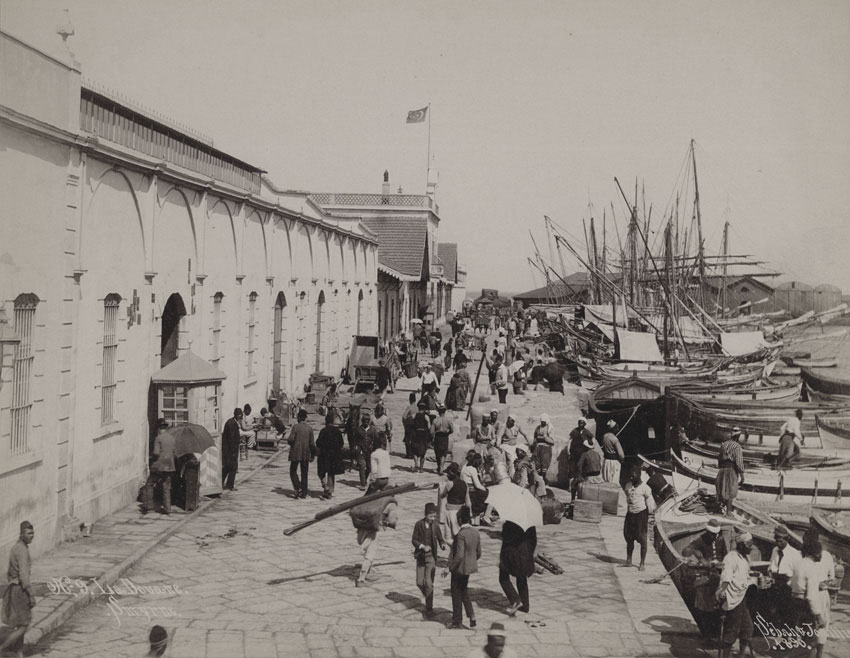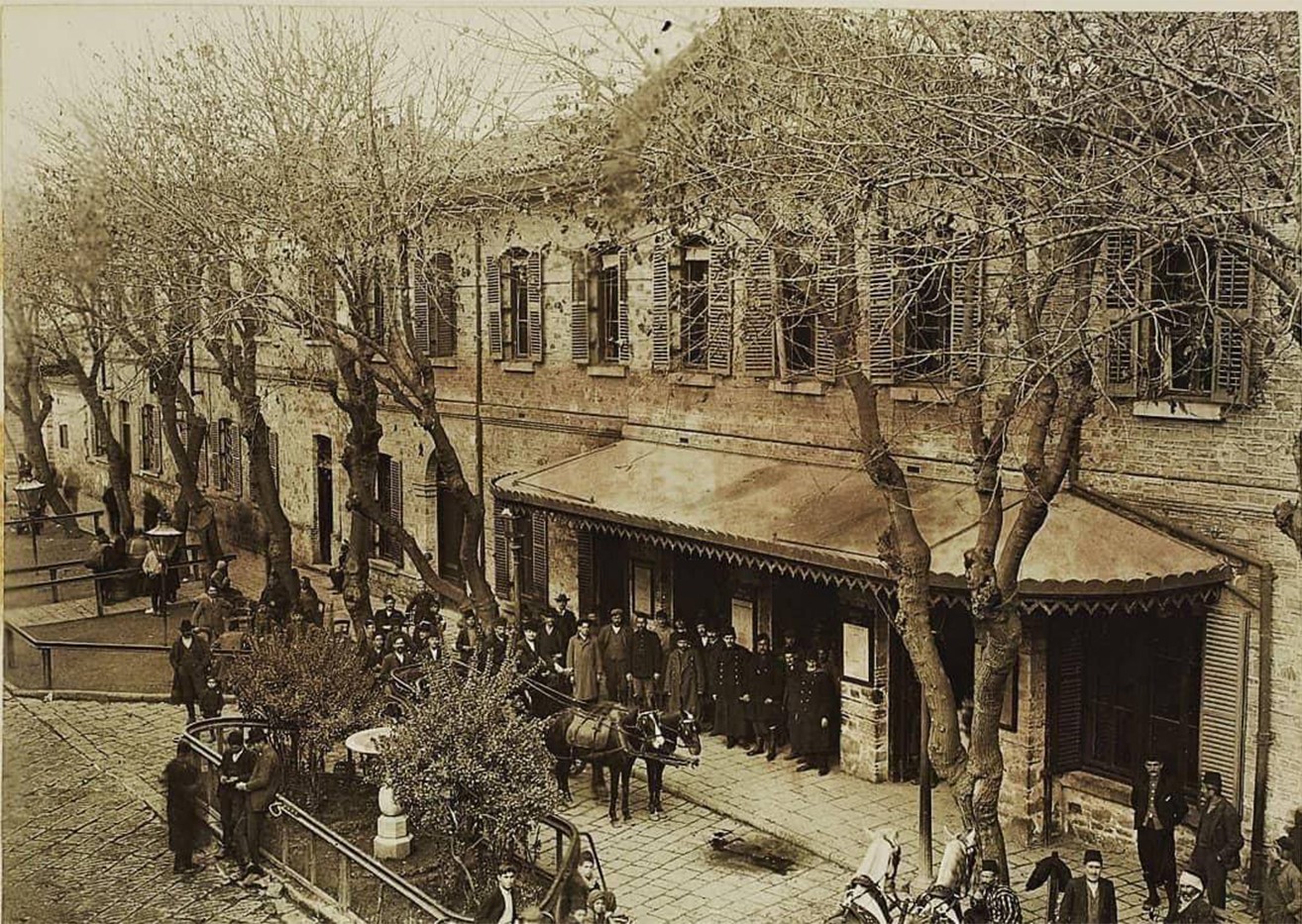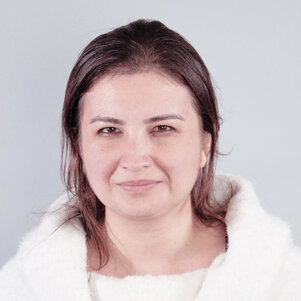The Mediterranean port city of İzmir, located in Türkiye, has been known for centuries by the epithet ‘the beautiful’. For her PhD thesis, Dr Fatma Tanış wrote three narratives to explore this city. “While the stories are semi-fictional, all characters and descriptions are based on archival materials and lived experiences. Throughout my research I often felt a personal connection to the travelogues I studied, even if they were centuries old.”
Fatma was born along the southwestern coast of Türkiye, spending her childhood on her family’s boat and the beach. “My first time abroad was sailing to Greece and Italy at the age of 14. There I first discovered how travelling broadens horizons and offers fresh perspectives. I was inspired by the familiarity of Greece, with its many historical and cultural ties to my home region, and by the novelty of Italy, especially Rome and Venice. It was the first step on my long journey of studying the built environment.”
How did this long journey lead you to Delft?
“It is in fact intertwined journeys, consisted of many individual travels. These revolved around my academic path, through which I was originally trained as an architect and later also as a historian, educator, and writer. During these travels, I became more and more fascinated with cross-cultural exchange: the core of my research interest today. I have inhabited, studied, and worked in microcosms like Dalyan, Bodrum, İzmir, İstanbul, Porto, and Hamburg, where I have observed the qualities of this exchange. Meantime, I explored these cities further and took part in local events.”
“Looking back, I realise that maritime cultures have been present in my entire life, shaping even my decisions on how to pursue architectural studies. For example, in İstanbul I studied at an architecture school along the Bosporus strait. In Hamburg, where I continued my research, I lived near the ‘Speicherstadt’: a historic warehouse district along the Elbe River. Fittingly, both my MSc theses involved port cities: one on contemporary design approaches, the other on preserving their cultural heritage. Everything aligned when I came across a TU Delft call for PhD proposals on cross-cultural conditions and practices in architecture and urbanism.”

What are the three narratives in your PhD thesis?
“Each narrative consists of travel notes depicting the city through the eyes of a traveller. To achieve a cross-cultural perspective, I deliberately chose narrators in between East and West, local and global. The first is a European traveller in the early 19th century who arrives by steamboat. They tour the historical city centre and meets a family working on a tramline. The second narrator has a similar journey, but in the late 19th century. They experience the changes brought by the industrial revolution, for example by taking a train to the outskirts of the city. Finally, I add my own memories. Moving from an inland neighbourhood to the waterfront, I highlight the traces of historic İzmir and their meaning to its inhabitants today.”
“To compose these narratives, I studied historical travellers’ logs, manuscripts, paintings, poems, old diaries, and scrapbooks. Each scene from the narratives is a collage of data extracted from visual and textual sources. Together, they reveal how architectural knowledge and practice were transferred, generated, integrated in İzmir, and influenced its urban cultures. My thesis also contains a toolkit for groups and individuals to tell their own story. I see it as providing ‘yeast for storytelling’: through feeding and cultivation, one creates more stories like these narratives.”

Did your sources ever surprise you?
“Yes, quite frequently in fact. Some texts explicitly discuss overcoming prejudice, such as a journal quoted in a 1840 travel guide: “How different are now my feelings towards the Turks; for I have found truth, honesty, and kindness […] in a people among whom I so little looked for them.” I also found testimonies regarding Turks, especially Turkish dignitaries, and Europeans getting along very well, such as in a 1902 letter from Gertude Bell. In times when the Orientalist project was in full swing, merchants of European descent significantly influenced the discourse about the ‘East’, as the case of İzmir represents.”
“I discovered that some photograph-based paintings were distorted. For example, this image from a carpet catalogue adds a mosque in the background. The manufacturers were well aware of Western fascination with ‘exotic’ goods and therefore made their imagery more ‘oriental’. Their power and mediating role then made them instrumental in the realisation of a residential quarter with unique ‘İzmir Houses’.”
“My research also made me aware of the value of information and knowledge we carry, derived from the impressions of our experiences. By travelling, walking, and carefully observing our surroundings, we create our own archives.”
What are your hopes for the future?
“Growing up, I was acutely aware of the gap between my drive and available possibilities to make a meaningful impact to my hometown. The memory still motivates me to contribute to society. In my doctoral research, I attempted to achieve this by building common ground between disciplines, professionals, and citizens. I believe that stories of cross-cultural exchange can lead to more engaged conversations about architectural and urban matters.”
“Although Turks were historically not widely published, they have always excelled as storytellers. Each city's inhabitants carry the biographies of their hometowns in their hearts. Today, several writers in İzmir are documenting the histories of their neighborhoods. By bringing such stories to life in my thesis, I aim to inspire citizens of İzmir to get involved in collaborations and support local projects. More broadly, my thesis invites everyone to explore interconnected port cities from their unique perspectives. The distinct port city cultures merit our attention and appreciation.”
“Digital advancements offer great potential not only for amplifying the impact of architectural research but also for utilising its outcomes. During my PhD, I studied one port city as a knowledge hub and examined the nature of knowledge exchanges during the 19th century. It laid the groundwork for exploring similar cases from the 20th century in my current projects. I am integrating digital tools into my research, driven by my desire to contribute to broader society and my continued enthusiasm for exploring innovative approaches in our field: embracing a transdisciplinary attitude for more hopeful futures.”
More information
Read Fatma’s thesis, called ‘Urban Scenes of a Port City: Exploring Beautiful İzmir through Narratives of Cosmopolitan Practices’.
Building on her doctoral research, Fatma is currently working on two parallel research projects:
- A-BK Since 2000, which simultaneously curates a digital repository for research output and constructs an online archive for the Department of Architecture.
- Visualisation of Networks Found in the Post Box by Jaap Bakema, part of the ‘Virtual CIAM Museum’, an interinstitutional project in development by the Nieuwe Instituut, ETH Zürich, and Getty Research Institute.


